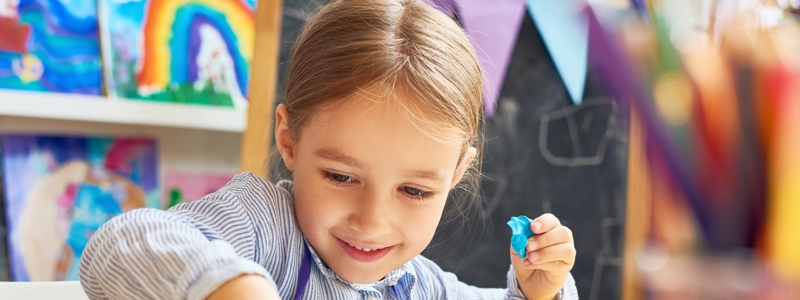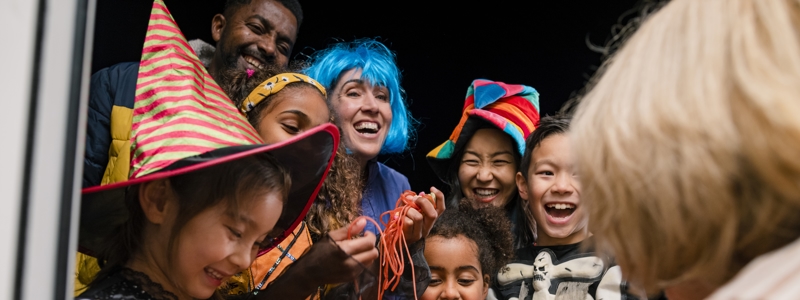Getting your children to enjoy learning is key when it comes to them engaging and retaining information. Often kids get bored of being taught subjects in the same way, so mixing it up with activities such as arts and crafts can do wonders when it comes to their learning. Arts and crafts activities are not only fun for kids, but can be used to help them solidify educational concepts and develop motor skills. In fact, experts say that hands-on, active learning is the most effective way to teach kids. We’ve chosen some excellent arts and crafts ideas, sure to engage your child and teach them a whole range of subjects from maths and writing to science and geometry.
Creative Letter/Number Learning
Learn About: Letters, Numbers, and Writing
Age: 3-7 Years
The ability to write letters and numbers is an important part of early childhood development. This simple but fun activity is a great way for younger kids to learn how to write out numbers and letters as well as be able to recognise them.
You’ll Need:
- White card
- Watercolour paints and paintbrush
- Water
- Petroleum jelly
- Paper towels
Instructions:
- Choose a letter or number and ask your child to apply the jelly onto the paper in that particular shape.
- Paint the paper using watercolours and see what happens as the colourful water washes over the jelly letter or number.
- When your child has finished painting, use a paper towel to wipe the jelly off the card and see the letter or number left behind.
Tip: Don’t forget to keep cleaning the brush off as it picks up some of the jelly making it difficult to paint.
Tie Dye T-Shirt
Learn About: Chemical Reactions, Science, Geometry
Age: Any age!
Tie Dying is a great activity for kids and adults to enjoy together. It typically involves twisting, folding and crumpling fabric and then tying with string or elastic bands before dipping in fabric dye. The dye will only take on untied parts of the fabric, creating patterns and shapes that are always completely unique. It’s a great opportunity for kids to learn about chemical reactions and why different shapes are formed depending on how the material was bound.
You’ll need:
- Cotton T-shirt
- Bucket
- Salt
- String/Elastic Bands
- Sachet of dye (Dylon have a great selection of colours)
Instructions:
- First prepare the dye together in a bucket, carefully following the manufacturer’s instructions.
- Next, take a clean, dry t-shirt and lay it flat. To create the circles, grab a small amount of fabric from the centre of the front of the T-shirt and tie a piece of string tightly around it. Use the same technique to tie a few more pieces of string on the front and back of the T-shirt.
- Wet the T-shirt before putting it in the dye. Ideally use a stick or something with a long handle to immerse the t-shirt carefully into the bucket of dye. Leave the t-shirt to sit for a minimum of 8 hours (or overnight).
- Finally, rinse the t-shirt under cool water until it runs clear. Then carefully remove the string which will have created the circle patterns. Hang the t-shirt up to dry. Viola!
Tip: Remember to hand-wash the shirt for the first few washes, so the dye doesn’t ruin other items in the washing machine.
Paper Plate Crafts
Learn About: Maths Concepts, Seasons, Literacy
Age: 5-11 Years
You’ll Need:
- Paper Plates
- Crayons/Pens/Paint/Glue/Feathers (anything you can get creative with)
Paper plates can be used for so many different arts and craft ideas. If your child just wants to be creative, ask them to turn their plates into animals, flowers or rainbows. Alternatively you could use them for simple learning activities. Here’s a couple of our favourite ideas.
Fractions: Fractions can be an incredibly difficult concept for younger children to master, so introducing them in a fun way can help kids approach the concept with a positive attitude. Simply draw out different fractions on each plate. You can either use them in this way for a visual aid or cut them out so they split the fractions up physically. For example giving your child 2x ¼ sections of the plate and asking them what that fraction is and another it is equivalent to.
Seasons: You can also use paper plates to help your kids understand concepts such as seasons. Get them to write each season in the middle on 4 different plates. Next, ask them to decorate each plate with items or words that link specifically to each season. They can do this with drawings, words, colours or decorative items.
Tip: This concept can be used for any words or places that you want to help your child learn more about or develop a deeper understanding. For example: Countries, Capital Cities or words like Eco-Friendly or Recycling.
Make Your Own Book
Learn About: Literacy, Storytelling
Age: 5-13 Years
Creating and writing a book of your child’s choice is an excellent way to build up their literacy and storytelling skills, as well as show them how fun writing can be. Watch this helpful YouTube Video for a few different ways to create DIY books using objects such as card, tape or clips. If your kids are younger, we recommend doing this step for them, however, for older children ask them to choose a method and start crafting their book. The next bit is the fun part. Ask your child to choose a theme or a story idea and let them get super creative by writing and drawing it out in their hand-crafted book. Finally, ask them to create a name for their book and draw a front cover that reflects the content inside.
Create Your Own Board Game
Learn About: Maths Concepts: Measuring, Counting, Dimensions and Language Skills, Problem Solving
Age: 5-16 Years
You’ll Need:
- Cardboard/ Card
- Markers
- Dice
- Figurines (whatever you have at home)
- Glue and Scissors
Getting your kids to craft and make their own board game is a great learning opportunity. Start by brainstorming some different themes or concepts that your kids want to make a board game about. They could even recreate an existing game but with a new topic. Once they’ve got a rough idea, your kids can start coming up with rules of the game and start crafting it. Here’s some things they can consider:
- How many players
- Length of the game
- What choices players will have
- How many squares does the board need
- How the game progresses
- The end goal of the game
Tip: Remind your kids to not overcomplicate their game – simple ideas are often the best! Once they’ve mastered that they can try adding in new rules to make the game a little more difficult.
Other Arts and Craft Ideas We Love
DIY Bouncy Balls: For Maths, Science, Chemical Reactions
Easy Origami Butterfly: For Geometry, Maths
Toothpick Construction: For STEM learning
For Even More Educational Arts and Crafts Ideas
Arts and Crafts Activities and Ideas from EdTechLens
Teaching Tools by Scholastic.com




